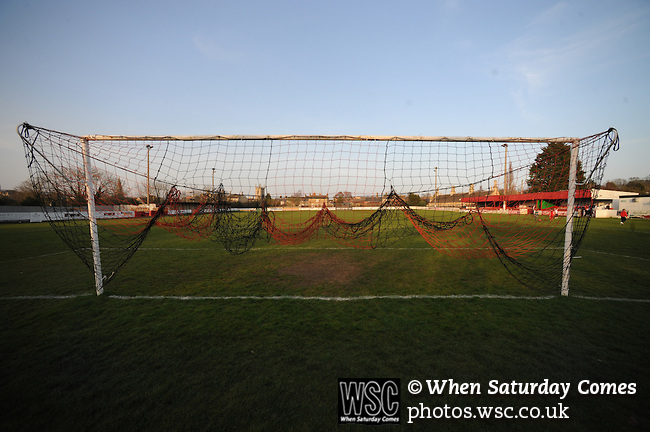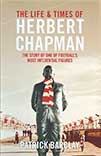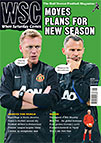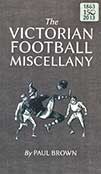
Search: ' crossbar'
Stories
Players are being criticised by fans and pundits after 1-0 defeat to Croatia
14 June ~ A week before the Euros kicked off, Turkey’s manager Fatih Terim tried to lower fans’ expectations. He declared that a draw against Croatia would be a great start to the tournament, and noted that should Croatia qualify for the knockout stages they would go very far in the tournament. By the looks of pre-game commentary on social and other forms of media, he was successful.
 by Patrick Barclay
by Patrick Barclay
Orion, £20
Reviewed by David Stubbs
From WSC 324 February 2014
Herbert Chapman is, with some justification, known as the great moderniser of English football – the old Highbury stadium with its art deco features was a monument to his forward thinking, in keeping with broader developments in the earlier 20th century. Chapman it was who insisted that the manager, rather than the directors, pick the team, who imagined the role of floodlights in games and numbers on shirts, who adapted quickest tactically to changes in the rules of football in the way he balanced attack and defence, who picked a black player. Of course, modernisation is a double-edged blade – he also took a dim view of union membership among players and early on proposed that Orient be used as a “feeder” club for Arsenal, a notion that doubtless appalled their fans then as much as it would today.
His status as a visionary is indisputable, however, given that he grew up in a footballing era when crossbars were still optional, when goalkeepers were allowed to handle, though not hold, the ball anywhere in their own half, and “hacking” or kicking on the shins was only just dying out as one of the manly characteristics of the less than beautiful game.
Having achieved triple League success with Huddersfield Town, Chapman turned his attention south – he dreamt of making then-trophy-less Arsenal the “Newcastle of the South”, which sounded very thrilling and far fetched in the 1920s. He repeated his triple League success at Highbury before his premature death in 1934, contracting pneumonia before penicillin was widely available – one aspect of modernity that came too late to save the grand old man.
Patrick Barclay tells Chapman’s story with capable thoroughness, noting that he was harshly handed a life ban for the illegal payments scandal that led to the disbanding of Leeds City, whom he managed between 1912 and 1918, but rather luckier to get away with the underhand “bungs” he offered to Charlie Buchan as compensation for losses on his sports shop business while at Arsenal. He also retells the saga of his getting representatives from Bolton Wanderers nicely drunk enough to drop their asking price for David Jack.
However, one gets the impression Barclay was hoping to discover more about Chapman from the archives than he is able to unearth. Chapman, you sense, was a man who played his cards close to his chest and didn’t testify more about this methods, his thinking, his philosophy, than he needed to. We have more evidence of his works than his inner workings. Despite Barclay’s efforts, he remains an elusive biographical subject. Consequently, there’s a lot of “Chapman would presumably have felt” this and “Chapman would most likely have thought” that. Barclay makes up the shortfall with diverting but at times bizarrely lengthy, tenuous digressions about Marie Lloyd, Edward Elgar and the First World War.
Still, this is probably as good an account as could be expected of the life of one of football’s cornerstone figures, the first great example of what a strong manager can do, given time, a free hand and his head.
 Gary Andrews explains how 3G pitches are becoming a more attractive option for non-League clubs, despite resistance from the FA
Gary Andrews explains how 3G pitches are becoming a more attractive option for non-League clubs, despite resistance from the FA
As the 2012-13 non-League season reached its climax, plenty of clubs will have envied Maidstone United. This wasn’t due to the Stones’ league position – they finished second in the Isthmian League Division One South and were promoted through the play-offs – but instead it was because of their 3G pitch, which registered just one postponement during the season. Non-League is more susceptible to bad weather than higher divisions but even allowing for the inevitable winter postponements, this year’s extended cold snap, snow and rain led to huge fixture pile-ups across the divisions, as reported in WSC 314.
 by Paul Brown
by Paul Brown
Goal-Post, £7.99
Reviewed by Terry Staunton
From WSC 318 August 2013
Pre-empting the terrace chants of several future generations, the 1878 FA Cup final referee was, indeed, a Bastard. Racehorse owner and solicitor Segar Bastard was the man with the whistle, although just a few years earlier he might have been waving a handkerchief to signal foul play, before a bright spark hit on the idea that something which made a noise might more easily attract players’ attention.
It sounds like an obvious tweaking of how the game should be played, along with the 1871 ruling that introduced dedicated goalkeepers – instead of anyone on the pitch being allowed to take a “fair catch” – although it would be another 40 years before keepers’ powers were reined in to prevent them from picking the ball up anywhere in their own half. Likewise, the Victorian equivalent of goal-line technology was the 1870s introduction of solid crossbars, thus ending the confusion and controversy caused by balls striking the strip of tape tied between the tops of posts.
Paul Brown’s miscellany doesn’t attempt a straight chronology of how the game developed while Queen Victoria was on the throne, and that is to the book’s advantage. The time-hopping scattergun collection of pivotal changes to the laws governing play is liberally peppered with tremendously trivial tales of Zulu warriors playing exhibition matches in Scarborough, newspaper reports of therapeutic games played between inmates of lunatic asylums and revelations about the health-conscious 1889 Sunderland team containing seven non-smokers.
The author’s visits to press archives come up trumps time and again, recounting St Patrick’s Day riots at an 1840 match in Edinburgh (“a reinforcement of the police soon dispersed the cowardly assailants; four of the ringleaders, we are happy to say, are in custody”) or Derby Council’s decision to ban the game outright in 1846, declaring it “a vestige of a semi-barbarous age”. And who wouldn’t have wanted to witness the game played in Windsor, when both teams had their ankles tied 15 inches apart and the winners were presented with a cheese?
Among these myriad curios, Brown offers potted biographies of pioneering teams, players and personalities. Modern-day fans of Notts County may already be well versed in the club’s history but it’s intriguing for the rest of us to learn that antagonisms with their Forest neighbours stretch back to the very first derby fixture, when the latter team sneakily fielded 17 players. Rightful space is afforded to such movers and shakers as first FA secretary Ebenezer Cobb Morley, aristocratic Arthur Kinnaird (a 19th-century David Beckham, suggests Brown) and poet Nevill “Nuts” Cobbold, regarded as the forefather of dribbling.
The rules may have varied from town to town, even factory to factory, before the FA sought workable unification, while outbreaks of violence meant football habitually filled as many column inches of the crime reports as it did the sports pages, but the colourful transitions the game went through to become the beast we know today are endlessly fascinating. This book doesn’t set out to tell the story in dense, sober detail, opting instead to present itself as a hugely entertaining exercise in eavesdropping.